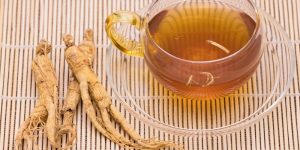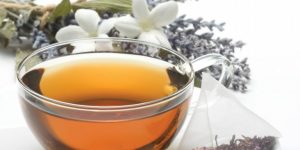
The types of tea are very important, as teas have been appreciated for various medicinal and calming purposes for so long that it is difficult to imagine, each type has its own functionality.
Although the thought is that tea has been enjoyed since 2700 BC. It was not introduced into the Western world until the beginning of the 17th century, where there was first contact with this drink.
This was when the East India Company brought its first export of Chinese tea. Since then, tea has evolved to become the second most popular drink after water.
And developments in growing and processing techniques have produced a dizzying number of varieties. If you are curious to learn about the basics of types of tea.

Types of teas:
Black tea
O black tea is a very beneficial tea, it is harvested from the Camellia sinensis plant. What makes it unique is that after the leaves are harvested. They are completely oxidized or exposed to oxygen.
When the desired level of oxidation is reached, the process is stopped by exposing the leaves to heat. The result is a rich, robust tea with a tannic flavor. Despite the name, the black tea has an amber hue when brewed.
Which is why in some countries like China it is known as red tea or hong cha. Two types of oxidative methods are used and each results in products with different prices.
Orthodox processing requires that the leaves are first dried and then rolled before oxidation. This is a more time-consuming technique, so the resulting tea tends to be of higher quality and more expensive.
The cut, tear and curl or CTC process uses machinery to do just that. Cutting, tearing and curling the leaves before they are oxidized, resulting in tea with a strong and consistent flavor between batches.
This is the black tea which you most often find sold in bags. Because its leaves are too small to be dipped, loose leaves.
Types of black tea
O black tea processed by CTC is best for strong drinks like masala chai. Or for those occasions when you'd like to add some cream too.
Processing methods aside, the region in which your black tea was cultivated is also an important characteristic. In fact, many popular varieties of black tea are named after their region.
Assam tea
Assam tea imparts a malty, i.e., nutty and sweet, flavor and is a bright amber color when brewed.
ceylon tea
Ceylon tea is citrusy and sweet in taste and carries a floral aroma. So it adds a nice touch of complexity to drinks like Thai iced tea.
Darjeeling tea
Darjeeling tea is a more complex variety as it is categorized as first, second or autumnal varieties. With the first flush harvested in the spring, the second flush during the summer and autumnal during the fall. As a rule, the later the Darjeeling is harvested, the darker its color and the fuller its flavor.
Green Tea
Unlike the black tea, O Green Tea it is steamed or cooked in a pan as soon as possible after harvesting to preserve its original qualities. OGreen Tea Chinese is usually cooked in large pots.
While the Green Tea Japanese is typically steamed in bamboo trays and each style produces a different flavor. Pan-firing the leaves results in a lighter, almost roasted flavor, while steaming the leaves creates a more vegetal and lively drink.
The sheets will then be rolled and dried after being heated, regardless of the method. In Japan, the variety of Green Tea Most common is Sencha, which is grown in direct sunlight and carries an astringent flavor.
And also an almost golden color when fermented. In contrast, matcha is another Green Tea Japanese that is grown in partial shade to intensify chlorophyll levels and therefore the umami, grassy taste that is so characteristic of Green Tea Japanese.
Popular varieties of Green Tea Chinese include Long Jing, or Dragon Well, and Liu An Gua Pian, or melon seed. Both have a smooth, sweet flavor and have a slight jade color when brewed, so they're easier to mix into more complex drinks, like this sangria.
Between the two countries, the main differences are that Chinese growing methods rely more on natural terroir to impart character and flavor, while Japanese methods are more controlled. One isn't objectively better than the other, it's simply about choosing what you like.
White tea:
O White tea is a particularly delicate tea variety, as it is harvested before the plant's leaves are fully open. This means that the season White tea it is short and, in turn, is a little more expensive than other teas.
O White tea It's also minimally processed, meaning it's not rolled or heavily oxidized, and manufacturers take great care to balance heat and humidity to dry the leaves.
This approach, combined with the young age of the leaves, means that the White tea It is one of the varieties with the most antioxidants, polyphenols and flavonoids. When fermented, the White tea It has a light, fresh flavor and is yellow in color.
As such, the White tea It does not get its name from its color when made into beer, but rather from the white hairs that cover the young leaves of its plant when it is harvested. In addition to enjoying a cup of White tea, how is it, tea-tini .
Oolong Tea:
Oolong tea also comes from the Camellia sinensis plant, but it is processed in a variety of ways, so oolong has a wider range of flavors and colors than most other categories of tea.
Unlike the White tea or green, oolong varieties are harvested from mature leaves. Allowing them to adopt the qualities of their terroir and become more complex in flavor.
That said, what really sets oolong apart is the wide range of oxidation it is exposed to, which typically ranges from 8 to 80%. Popular oolong varieties like Dan Chong or Phoenix tea are less oxidized and have a more floral and light flavor.
While a variety like Da Hong Pao, or Wuyi tea, is heavily oxidized. Having a full-bodied flavor and darker tone. Another important factor in distinguishing between oolong varieties is whether their leaves have been curled or twisted.

Typically, those that are rolled will have a lighter flavor and greener color because less of their surface area is exposed to air. Twisted varieties of oolong are less commonly found, but they are easier and quicker to infuse.
Since its leaves have not been curled as much as the curled varieties. Due to its diverse characteristics, oolong offers tea lovers' room to explore. So try different varieties by making a simple iced or milk tea.
Pu-erh tea
Originating from Yunnan, China, pu-erh tea comes from the large-leaf Assamica variety of the Camellia sinensis plant. And its heritage and classification are protected by the government, just like champagne or Parmigiano-Reggiano cheese.
There are two main categories of pu-erh tea, known as sheng, or raw pu-erh, and shou, or ripe pu-erh. Pure tea is first dried and then heated in batches to slow the oxidation process and also to reduce the amount of water.
It is then dried in the sun, pressed into cakes and aged for anywhere from 3 months to over 30 years. Aging tea allows its flavor to ripen and mellow, so quality raw pu-erh should have a full-bodied but not astringent flavor.
Ripe pu-erh is a recent invention in terms of tea production, starting in the 1970s when manufacturers developed a method to speed up processing.
After drying in the sun, the leaves are stacked and left in temperature-controlled conditions. Allowing them to ferment before being pressed. This matures the flavor of the tea in a matter of months, not years.
And although mature pu-erh is usually made from lower quality leaves. It can produce a unique earthy flavor often sought after by tea lovers.
Due to their more intense flavor, both pure and ripe tea pair perfectly with savory dishes like seaweed egg soup or pan-fried dumplings.
Herbs tea
Although technically tea should come from the Camellia sinensis plant, in practice. Many herbal infusions are also categorized as tea. Popular varieties of herbal teas include mint, chamomile and yerba mate.
Each herbal teas It's as unique as the blend or ingredients used, so the category is quite broad. You herbal teas They are not only appreciated for their flavor and aroma, but also for their medicinal qualities.
Take sage tea, which is known to have healing and mood-enhancing effects, or turmeric tea, which has anti-inflammatory properties.
Another benefit of herbal teas is that many varieties do not contain caffeine. Therefore, if you are prone to shaking, this category of teas is a good option.












